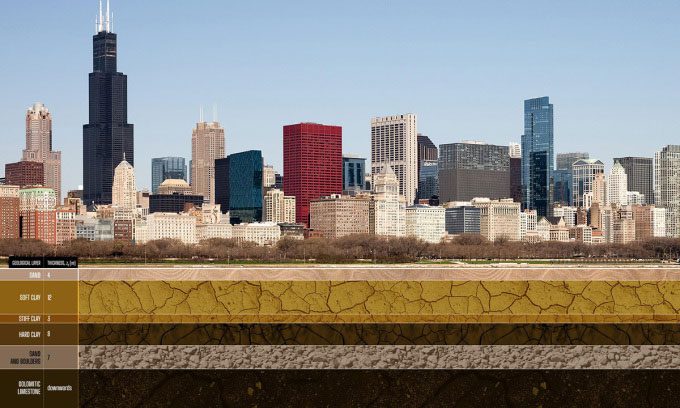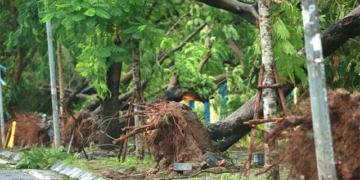The warming, expansion, and contraction of the underground environment can damage structures above that are not designed to withstand such changes.
In urban areas, concrete and steel structures can conduct heat from the sun downward through their foundations into the soil beneath them. Additionally, heat from parking garages and underground transportation systems, which include numerous tunnels and metal pipes, can cause temperatures below cities to be significantly higher than those at the surface. A new study by a team of experts at Northwestern University, USA, published in the journal Communications Engineering on July 11, refers to this phenomenon as a “silent hazard.”

Different soil layers beneath Chicago react uniquely to heat, causing the ground to deform as temperatures rise. (Photo: Alessandro Rotta Loria/Northwestern University).
According to the study, the ground temperature in the Chicago Loop—a bustling area filled with skyscrapers and other structures—is 10 degrees Celsius higher than the temperature below nearby Grant Park. The air temperature in underground structures is even 25 degrees Celsius warmer than the subterranean temperature in undeveloped areas. This data was gathered after the research team monitored 150 wireless temperature sensors installed around Chicago for three years and used computer modeling to analyze the findings.
“Think about basements, parking garages, tunnels, and trains; all of these continuously emit heat. Overall, cities are warmer than rural areas because building materials retain heat emitted by human activities and solar radiation, which is subsequently released into the atmosphere. This process has been studied for decades. Now, we are examining the corresponding aspects below the surface,” explained Alessandro Rotta Loria, the lead researcher at Northwestern University.
The team of scientists notes that the additional heat accumulating beneath cities is referred to as “subsurface climate change”, and its impacts can be quite severe.
Since different types of soil react to heat in various ways, they deform at different rates, causing ground distortion and potential damage to structures above. The new study indicates that subsurface climate change can cause the ground to swell by up to 12 mm in some places, while sinking by as much as 8 mm under the weight of buildings.
Rotta Loria stated that the effects of urban soil movement do not occur immediately but will gradually crack foundations and subject buildings to pressures they cannot withstand. This is particularly true for older structures built with stone and brick, such as those found in Europe. Relatively modern buildings are also at risk because they were not designed to cope with subsurface climate change.
To address the threat posed by subsurface climate change in urban areas, the team of experts suggests utilizing underground heat to warm the buildings above through modern geothermal heating technology. They also recommend that new constructions be designed with better insulation capabilities to prevent them from transferring additional heat to the underground environment.


















































